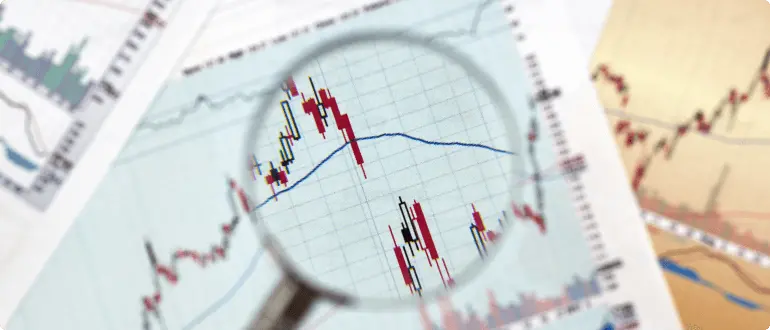Almost all traders get acquainted with the MetaTrader 4 (MT4) trading platform at the beginning of their journey. It was released by MetaQuotes in 2005 and is currently the most popular, especially among those who trade forex. MetaTrader 5 is the next, improved generation of this software. However, they are very similar in key functionality, and the interface is generally identical.
Whichever of the two options of MetaTrader you choose, you will definitely need keyboard shortcuts: combinations of buttons that call specific functions, windows, and actions on the platform side. They are very convenient to use. Moreover, they optimize the trader's capabilities and make trading as productive as possible.
Keys in various combinations help you not to go to the menu every time in search of the desired function. In fact, it is easier and faster to remember the hot buttons than to find the way to one or another option of the trading terminal every time. Moreover, the menu does not have everything: something is initially embedded in keyboard shortcuts, remains at the level of muscle memory and greatly simplifies working with the platform.
Of course, it is very difficult to remember all the variations in MT4 at once, and therefore it is recommended to print out the function lists from the official developer's website and place them next to the monitor. In this article, we will help you find the logic in using hotkeys for a trading terminal, which will greatly facilitate their use.
In addition, you can customize the process by assigning any of the buttons to a platform function from the available list. We'll talk about this at the end of the article, but in the meantime, we suggest that you master the combinations that the developers have already prepared for you.
- To move forward and backward in the timeline, you need to scroll the mouse wheel up or down, respectively.
- To move back and forth across the entire screen, use the Page Up and Page Down keys.
- To go to the most recent price on the chart, click End, and to the initial quote (which basically started recording changes for this instrument or to the first one loaded in your terminal), click Home.
- To move through historical data, i.e. to the left, analyzing one column (bar or candle) at a time, press F12. This tip can be useful for those who are learning to read market movements and track the market's reaction to news. Moreover, this advice is very important for the strategy development process.
- Now place the cursor on the vertical price scale (the one where prices are displayed). If you click on it, you will be able to move around by zooming in and out of the displayed data with the up and down arrows. That is, you will be able to see goals and quotes outside the current chart range. It turns out not a time frame, as in the case of time, but a price frame.
- If you press 5 on the numeric keypad (numpad), the vertical price scale is restored to its default values. This can be useful for placing stoplosses, тейкtake profits, support / resistance levels, etc. that are outside the current automatic range.
- Then place the cursor on the horizontal bar at the very bottom of the chart that displays the time. If you click on it, you can move in both directions by pressing the left and right arrows. This allows you to zoom in or out of the chart as if you were pressing the + and-buttons.
- To go directly to a specific date in the past, press Enter, and then enter the following format: DD. MM. YY. If you want to go directly to a specific time, also insert the digits HH. MM.
- If you have used any of the previous functions and want to return the chart to its default position, double-click on it and it will return to its original scale.
Have you ever wondered about the length of the last wave? Or, perhaps, you needed to calculate how many points remained before the level at which your Stop Loss or Take Profit was placed? Or how many candlesticks can each of the trend cycles on the chart contain? In both MetaTrader 4 and MetaTrader 5, there is a special feature called "Ruler" (or Crosshair).
It allows you to easily measure the desired distances. To access this tool, click on the mouse wheel. If you don't have it, press the Ctrl+F keyboard shortcuts.Now hold down the left mouse button at a certain point and drag the cursor to another place where you want to measure the distance.
Ruler Tool
The Crosshair ruler in MetaTrader 4 contains three different pieces of data:
- The first part indicates the current price at which the mouse cursor is located.
- The next number reflects the number of points between the first and second points. Keep in mind that most Forex brokers offer a fractional price in pips. So a value of 53 means 5.3 points.
- The last number indicates the current price at which the mouse cursor is located.
Next, get acquainted with the merge tool in Metatrader 4. Some traders use it to add one indicator to another. For example, if you want to add Bollinger Bands to the RSI, first add the RSI to the chart. After that, open the Navigator window, find the Bollinger Bands and drag them to the already installed indicator.
Combining indicators in MetaTrader 5.
The Properties pop-up window will appear in front of you. Open the "Parameters" tab, then click the "Apply to" drop-down menu and select "First Indicator Data". This is how you can add one indicator to another.
Combining indicators in MetaTrader 5.
Now we offer a small list of the most common hotkeys that will allow you to configure the display of the price chart.
- You can trade in the standard multi-window mode, or by expanding the chart window to full screen (F11).
- Your chart can be displayed as bars (Alt + 1), Japanese candlesticks (Alt + 2), or lines (Alt + 3).
- The grid appears on it and is removed using the Ctrl + Gcombination, and the OHLC (Open-High-Low-Close) data in the upper-left corner is called up by pressing Ctrl + H.
- You can also place volume data on the main chart (Ctrl + L), save quotes for the current asset in CSV, PRN, or HTM format (Ctrl +L). S) and print the current chart window (Ctrl + P).
- You can move to the next asset by pressing Ctrl + F6.
Save yourself this little cheat sheet so that you don't get scared every time you accidentally close an important and necessary window:
- F1-opens documentation, help, and other guides on the trading platform.
- F2 – click when you want to view historical quotes for an asset.
- F3 – useful for managing and configuring global variables that store the numeric values of the platform when the computer shuts down or even just closes the terminal. Also, these variables are usually left behind by the trading adviser in the MetaTrader terminal during its operationMetaTrader.
- F4-call this command if you want to log in to the MetaEditor robot creation and editing MetaEditorenvironment.
- F5 – usually not used (helps you move to the next trading profile).
- F6-use this button to launch the testing window of the Expert Advisor installed on the current chart.
- F7-you can edit the properties of the trading robot in the window opened by this button.
- F8-helps you make changes to the settings of the selected chart.
- F9-a window will appear where you can open a trade on the current asset by selecting a market, limit or stop order.
- Ctrl + F9-opens a window with the main chart and allows you to perform trading operations using the keyboard.
- F10-opens a window with current quotes.
- Esc is a simple, useful button that closes any dialog box.
- Ctrl + D – useful for opening a window with Open-High-Low-Close data for the selected bar / candle.
- Ctrl + I – you will see a list of all available trading indicators.
- Ctrl + B-you will see all the graphic objects that can be placed on the chart (for example, lines).
- Ctrl + M – list of all symbols for trading (assets) with Bid and Askprices.
- Ctrl + N-a list of accounts, indicators, Expert Advisors, and scripts available on this platform will appear.
- Ctrl + O – basic settings of the MetaTrader platform here.
- Ctrl + T-opens a window with many tabs under the chart, including the Account History and a list of current transactions.
- Ctrl + R-opens a window for testing trading experts (robots).
Often, traders need to move the Stop Loss and Take Profit levels away from the current price or closer to it. For convenience, you should display these lines on the chart. The Ctrl + O combination will help you (or you can go to the "Options" section of the "Tools" menu). Select the "Charts" tab and select the "Show trading levels" checkbox. Now you can see all your SL and TP's, making it easier to drag and drop them.
In addition, you can quickly outline the price channel. First, select a trendline. Then, hold down Ctrland left-click on it. A parallel line will appear and you can draw a channel.
Quickly draw parallel straight lines to build a channel.
It is also easy to copy any object by clicking on it and then pressing Ctrl + left mouse button. The copied object appears directly on top of the original one.
To edit the properties of any object, double-click on it.
How do I create my own keyboard shortcuts?
To add other hotkeys to indicators, scripts, or experts, go to the Navigator window (Ctrl-N) and right-click on any element (Expert Advisor, indicator). A pop-up menu will appear with the "Set hotkey" option. Then you will see a list of available functions that you can apply keyboard shortcuts to.
Personal keyboard shortcuts.
By the way, those that you added yourself have the highest priority over those that were set by the developers by default.
Assign your own hotkeys to MT5.
MT4 and MT5 keyboard shortcuts are a convenient tool for a practicing trader who is used to doing everything accurately and quickly. By memorizing a few frequently used combinations, you can save time, which is especially precious in the market when you need to quickly open or close trades.




